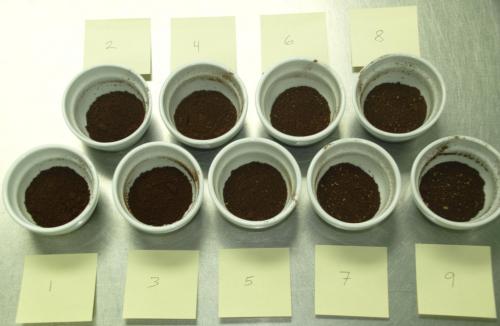Top Posts for September, 2016
Last month I did a recap of the top posts for August and in September that was the 2nd most read post on the blog, so if people keep reading things like that, I'll keep writing things like that. There were fewer new posts in September, but there will probably be more new posts this month.
Most Searched: Modbus Simulation on Linux
This didn't make the top 5 for September, but it was the post that most people arriving from search engines landed on. I was skeptical of the initial popularity of this piece, not believing that there would be so many people interested in reading how I set up a testing environment for new Modbus RTU communications code in Typica, but perhaps this is something that a fair number of people want to do for their own projects. Thankfully nobody is asking me to troubleshoot their broken setups as sometimes happens when I post code examples elsewhere.
5. What I'm Doing at Roasters Guild Retreat
Once again, the pre-retreat post has been read more than the post-retreat post, which came in as the 10th most read post on the blog in September.
4. Introducing Threshold Annotations
This is about a new feature that's ready for inclusion in the next release of Typica. Some time this month (hopefully on the earlier side of that) I expect to have another pre-release build for people who don't want to compile Typica themselves along with a video that explains all of the different kinds of annotation controls available in Typica and when to use those.
3. Writing About Centerlining Your Cupping Process

This is a post about an article that I wrote for Daily Coffee News about a procedure that I've used in my own shop to ensure that I can get the most useful information out of my cupping sessions. I have a follow up post sitting in my drafts folder waiting for the original article to drop off the front page at Daily Coffee News which includes the original unedited content as well as some of the feedback I received about that. It should be going up soon.
Since then I've written another article that's currently going through editing on the use of Profile Translation Analysis. People using Typica might be familiar with its profile translation feature as a way to improve roasting consistency, but the technique pre-dates Typica by at least several years (I was doing this on paper back in 2000 or 2001 and while nobody taught it to me I wouldn't be surprised if others were doing this before I was) as a way to compare roasting data from different batches of the same coffee and correctly identify how differences in how those batches taste can be connected to differences in how those batches were roasted.
I'd like to get better tools out for doing that sort of post-roast analysis.
2. Top Posts for August, 2016
I suspect that this post placed as highly as it did mainly because it was up all month. Much like this post, it went through the most read posts of the month and provided some additional commentary on those.
1. Development Time Ratio Considered Harmful
For a second month in a row, this has been the most popular post on the blog. Despite this and a new entry in the FAQ, I'm still getting people asking about adding features to Typica that support seeing this as a live indication during roasting, but nobody has yet been able to explain why they expect that to be useful other than that a lot of people talk about it. I considered writing another stand alone post called something along the lines of, "Stop Asking Me to Make the Gun You Want to Use to Shoot Yourself in the Foot". I might still do that, but to clarify briefly, the problem with the concept isn't what number anybody cares to recommend. It's that the concept itself is meaningless and doesn't connect to anything that actually happens during coffee roasting. The more I read in defense of it, the more it reminds me of geocentric models of the heavens. Things that don't fit are noted, the exceptions are classified, but a good reason for why doing this division should make sense isn't given. Profile translation analysis provides a view of roasting that is superior in every way so I would much rather work on improving the tools to make that technique more accessible than help people waste time on something which is fundamentally flawed.
As noted above, I'll have an explanation about what profile translation analysis is and how to use it coming out in an article later. It will, of course, get a blog post when that comes out.
 Typica: Software for Coffee Roasting Operations
Typica: Software for Coffee Roasting Operations